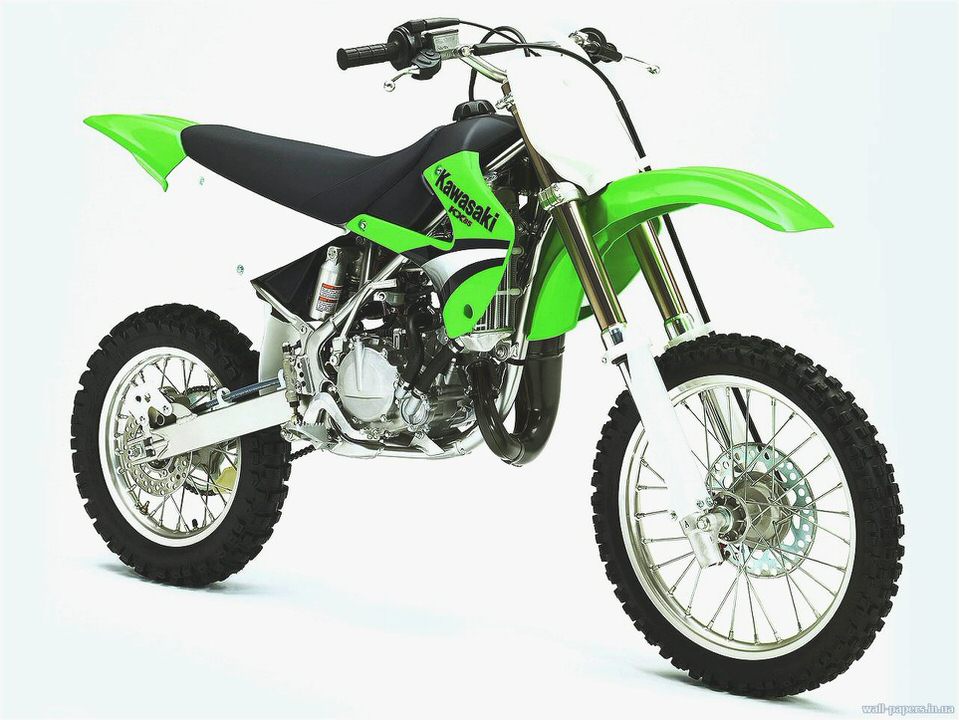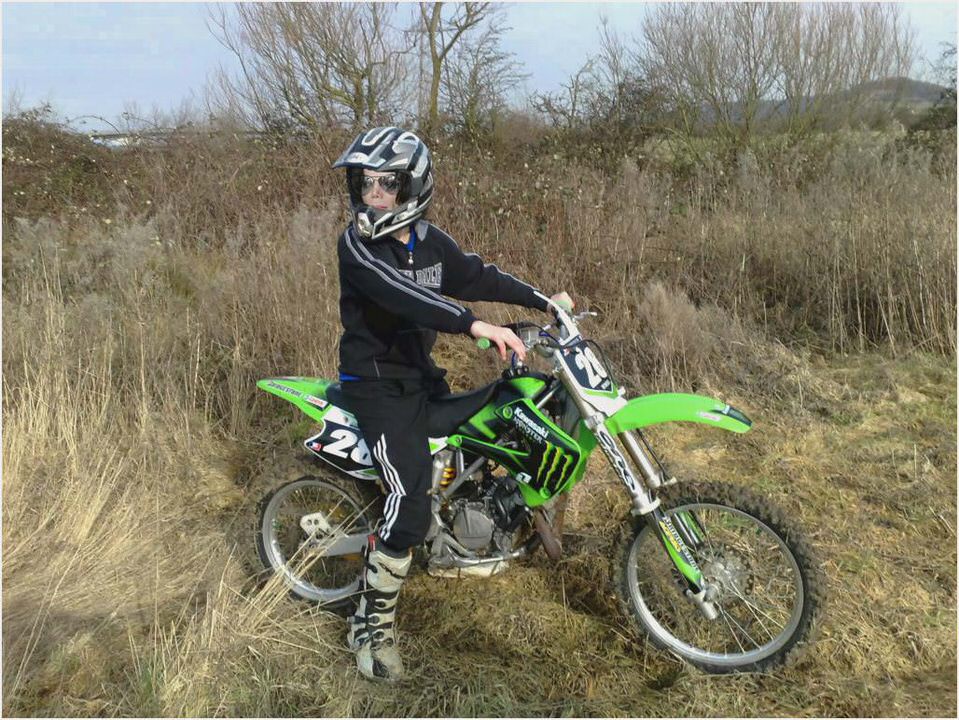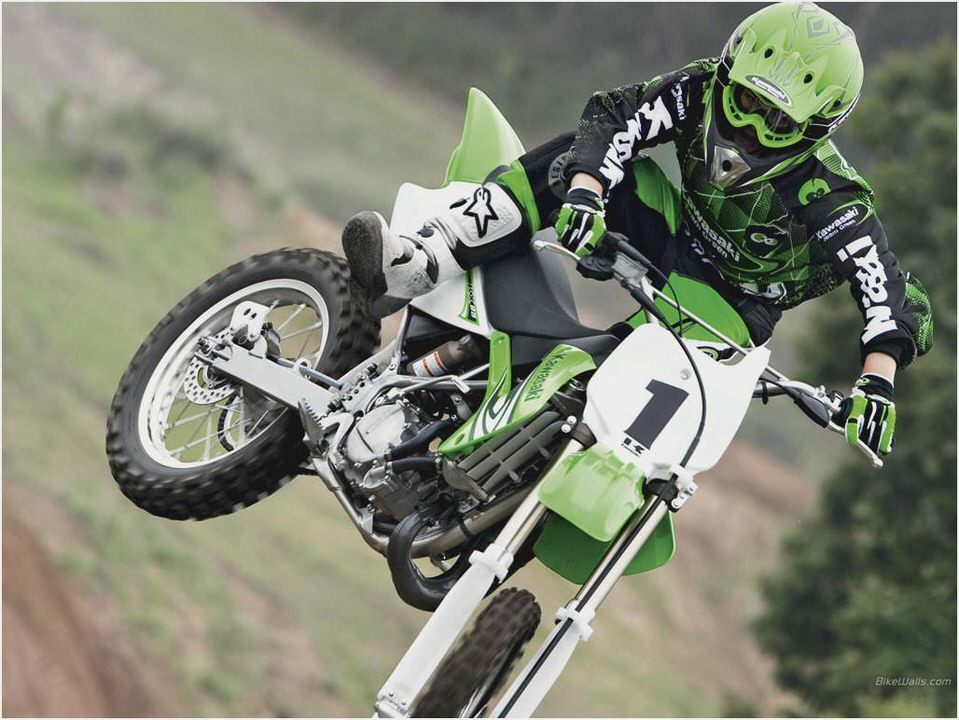
2004 Kawasaki KX85
Kawasaki’s developmental racing program has been one of the most successful in the history of the motocross thanks in large part to the success of the KX80 and KX85 and its affiliation with names like Carmichael and Stewart. It never hurts to get future champions on your bike at an early age and Kawasaki has managed to do just that for well over a decade.
For years, the KX was viewed by many as the king of the proverbial 80cc hill. Back in 2001 Kawasaki increased displacement on its machine to 84cc, the only manufacturer to boast an engine that exceeded 80cc. However, in 2003 manufacturers of red, blue, and yellow bikes joined the club and upped displacement on their respective models to match the little green machine.
For ’04 little has changed on the small-wheel KX85. Nestled inside a high-tensile steel perimeter frame is an 84cc liquid-cooled two-stroke single-cylinder powerplant. With a relatively square engine that boasts a bore and stroke of 48.5 x 45.8 mm and a compression ratio of 10.1:1, Kawasaki isn’t breaking new ground in ’04, but when a formula is successful why deviate?
The spec sheet may read the same as last year’s model, but we have a sneaking suspicion that Team Green engineers may have tweaked the motor for ’04. Last year’s model received criticism from a few of the glossies for exhibiting plenty of low-end grunt and midrange power, but lacking a little when the revs ascend to the upper regions of the power band.
According to our testers, Kawasaki has mended top-end deficiencies for ’04, but have they done so at the expense of the low-end grunt that the KX85 was praised for last year? Mason Watson, who used to race 85s, believes that the KX is ultra competitive, but it could use a little boost in the low- and mid-ranges.
Mason Watson pushes the stock suspension setting at RVMX in Southern Oregon.
It’s a really quick bike, especially on top, says the 115-pound MXer. Once you get the revs up the bike just smokes and continues to pull hard until you hit the rev limiter. But it definitely lacks a little on the low end.
Some of the other 2004 85s I’ve ridden have a little bit more on the bottom, but I can honestly say that the KX hits as hard as any other 85cc at the top of the powerband.
Delivering the air/fuel mixture to the Electrofusion-coated cylinder is a Keihin 28mm carburetor that features a crescent-slide, which positions the needle closer to the intake ports, ultimately making for a more combustible mixture. Allowing the KX to exhale is a Kawasaki Integrated Power-Valve System and exhaust pipe capped with a KX250-style muffler.
In real world terms, the KX’s carburetion and throttle response is spot on and gives the rider lighting quick reaction with a twist of the wrist. James Record, who recently made the move up to a 125, fell in love with the KX85 we brought to the track and praised the KX’s fuel delivery system.
The throttle response is awesome, said James. As soon as you twist the throttle it comes on, same as when you shut it down, it’s off. Pretty much, the bike performed perfectly; when I asked for more it was there.
The KX85 got rave reviews for a buttery clutch that made scrolling through the gears a breeze.
Scrolling through the gears was merely an afterthought for our two test riders. Both remained neutral on the topic of the six-speed transmission but loved the clutch, which they described repeatedly as awesome. Missed shifts and false neutrals were absent throughout the test.
Unlike the transmission, the suspension got plenty of attention and rave reviews, especially from the 90-pound Record. The KX was set up perfectly for the 14-year old right from the factory and he didn’t have to make any adjustments to the 36mm inverted telescopic cartridge fork.
Watson, on the other hand, had to take advantage of the 18-way compression damping for the KX to accommodate his 115-pound frame. With adjustments to the fork and the Uni-Trak single shock (with 4-way compression and 18-way rebound damping), Watson managed to turn the KX into a moto-ready machine that absorbed big hits and nasty whoops sections.
When properly set up the KX proved to be a great motocrosser, but this small-wheel version doesn’t fit big kids very well ergonomically. With its 14-inch rear wheel and 17-inch front wheel, Kawasaki had smaller riders in mind who have yet to make the leap to the expert model, which offers a 19-inch front wheel and 16-inch rear.
Our test version was a bit small for the 5’6 Watson, so he felt more comfortable sitting down as the bars are too low to comfortably accommodate aggressive stand-up riding for long periods of time. Taller bars and suspension changes would likely make the KX suitable for riders of his size, but an expert model would be the answer to his ergonomic dilemma.
90-pound James Record found the stock suspension setting to be perfect for his size.
On the other hand, Record’s diminutive 4’11 stature fits the KX like a glove. Kawasaki designed a special 1.5-gallon gas tank to sit low in the frame in an effort to keep the center of gravity as close to the ground as possible, which improves overall handling and reduces the seat height to 33.1 inches. Details such as these make the 85cc a dream to ride on the track for someone of Record’s size.
In fact, we couldn’t get him off the bike and had to physically remove him to get his thoughts on Team Green’s 85cc machine.


The bike’s just awesome to ride, he said of the 143-pound KX. It went right where I wanted it to and it handled really well in the corners. Some 85s are harder to flick around, especially the big-wheeled versions, but the Kawi was tight.
It felt really good in the air and on the ground, just every where.
Bringing the KX to a stop is a set of hydraulically actuated discs, which performed admirably through the test. They exhibit little or no fade during 30-minute moto sessions and the levers provide excellent feel.
The brakes were great, said Watson. They were smooth and gripped well. The rear did exactly what I asked and overall I though the brakes spot-on.
The only universal complaint the KX elicits are the butter-like handlebars that come stock. Both riders cite the need for aftermarket bars, especially if the bike were to be used in competition.
Our test duo found the 2004 KX85 to be a vast improvement over the minis they rode just a few years ago.
At the end of the test our crew unanimously agreed the new generation of 85s are a vast improvement over the two-strokes they rode just a few years ago. In fact, Record noted that he would likely only change the bars and the jetting were he to go race the KX. Similarly, Watson felt like a set of bars, a little tweaking of the jetting and a change of gears would make the KX very competitive on the track.
Definitely, if you got the right rider on it, it would be a great bike, said Watson. Change a few things, nothing major, and this bike is a winner.
Echoing Watson’s comments, Record went even a step further: If I were still racing 85s I would definitely buy the KX, said James. I had the 2001 model when I was racing them and I loved it. This is a better machine, more power, better components.
It’s just awesome.
Now there’s an endorsement any manufacturer would love to get, champion or not.
Share your thoughts on the ’04 Kawasaki KX85 in the MCUSA Forum .


- Kawasaki Versys Review from ChoiceQuote Motorcycle Insurance
- ZRX Hooliganism zrxrider’s Blog
- Kawasaki Vulcan 900 – Vulcan 900 Custom – Kawasaki Motorcycle
- Longterm Test: 2010 Kawasaki ER-6n Super Streetbike
- Kawasaki Versys
